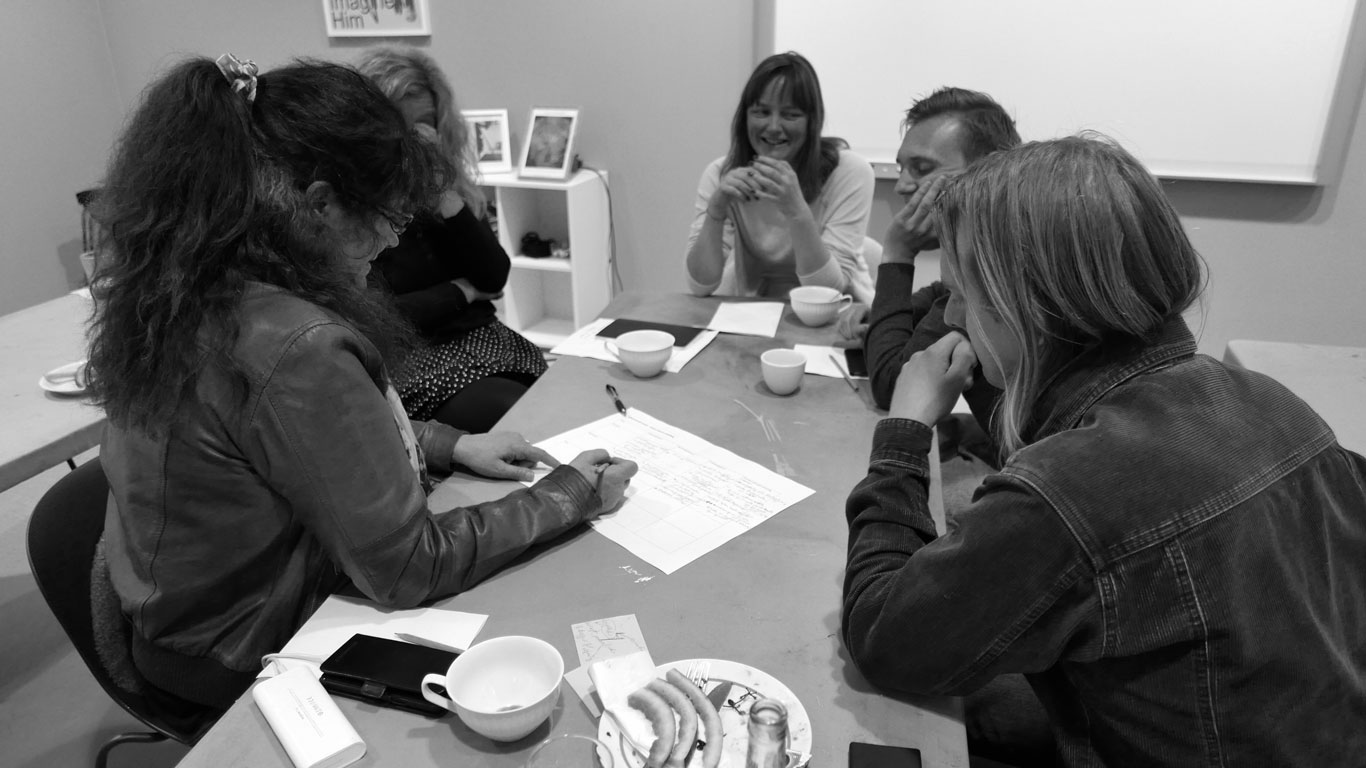Working across departments to find playful and inclusive strategies
by Elise Grimsrud Christensen, Educator, and Hanne Steien, Exhibition Designer, The Norwegian Center for Holocaust and Minority Studies
In connection to the GIFT Action Research, we ran workshops to explore how we could develop playful and inclusive strategies for our upcoming extension of gallery spaces. The experiment was a success and we learned that our organisation really needs a space for working cross-departmentally.
What did you want to find out?
We wanted to explore how we might collaborate cross-departmentally with an aim to find playful strategies that stimulate staff’s cooperation and excitement for our upcoming extension of gallery spaces.
What did you do?
We applied our previous insights on the concept of playfulness to the process of creating a more democratic culture within our organisation, focusing specifically on the extension of gallery spaces scheduled to open in 2021. We decided to arrange three workshops for the entire staff using playful methods to explore:
- Future temporary exhibition themes and concepts
- Criteria for an inclusive working process
- Different ways to create metaphorical and physical bridges between historical and symbolic buildings and contemporary museum architecture
Each workshop included a visit to another museum for inspiration and conversations with curators, educators and researchers.

Working together at the first workshop. @ The Norwegian Center for Holocaust and Minority Studies.
Was it successful?
All around, the experiment was a success:
- We succeeded in creating a space that stimulated engagement and participation.
- We succeeded in including almost everyone through playful methods.
- Management acknowledged and appreciated the format and outcome of the workshops.
- Most participants found it a positive, fun and inspiring experience!
However, despite the ambition to include the views of everyone, some colleagues in marketing, front desk and maintenance found it difficult to contribute as much as they wanted to during the workshop.
What did you learn?
We learned that our organisation needed a space for cross-department meetings. Instigating such meetings by trying to establish a common ground proved to have a great value. To meet on equal terms through a shared experience reduces friction. Therefore, an inspirational encounter with an external party was essential. In our effort to include all colleagues we did experience challenges in making everyone feel included and valued. We learned that tasks and questions should be specific and to the point, making it clear that all types of competences and inputs are valued. Everyone should feel included in the task and it should be obvious what we want them to do and why we ask them to engage in the conversation. Furthermore, we learned that written feedback is essential. Not everyone is comfortable with speaking publicly and voicing honest opinions in front of management and colleagues. Therefore, we concluded the workshop with so-called “exit notes” asking all our colleagues to express their opinions at the end of the day. These “exit notes” often differed from the opinions expressed during the workshops.
What surprised you?
Before the first workshop took place, we were quite nervous. Management and several colleagues were skeptical. It seemed like the word “democratic” was unpopular. However, during the workshop, skepticism and animosity transformed into engagement! We believe we aroused an appetite for coming together cross-departmentally in a space that combined thematic, social and professional development. The methods we used were playful, allowing participants who work within extremely complicated and emotionally charged fields to collaborate spontaneously and creatively.
What methods or tools did you use?
We were inspired by this method to encourage reflection and mutual understanding of different perspectives developed by Dembra.
What other resources did you use?
The museums we visited were: